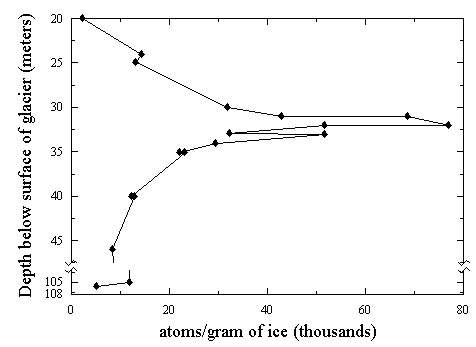

Nuclear weapons tested in the 1950's-60's produced a significant amount of chlorine-36. Atmospheric processes subsequently deposited measurable amounts of chlorine-36 all over the globe. Analysis of polar ice showed the presence of bomb-produced chlorine-36 and thus indicated that the history of climatic conditions is indeed preserved in ice cores.
Glaciers in temperate locations, such as the continental United States, were thought to be unsuitable as preservers of climatic conditions due to the effects of thawing, refreezing, and associated meltwater percolation. However, analysis of the Upper Fremont ice-core showed large levels of chorine-36 (see figure) that definitely correspond to the production of chlorine-36 through the testing of nuclear weapons.
The analysis of ice-core samples from Upper Fremont Glacier continues to be performed to determine the natural and bomb-produced fluxes of chlorine-36 at the same latitude as the Idaho National Engineering Environmental Laboratory (INEEL). This information will facilitate the use of chlorine-36 as a hydrogeologic tracer in the environment at the INEEL.